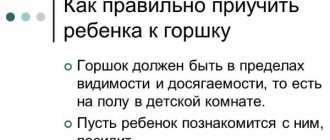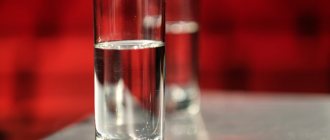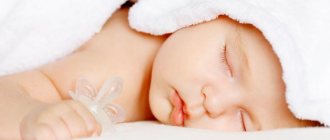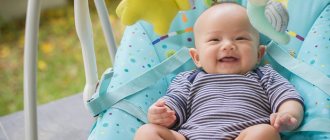Water is the source of life. Therefore, from infancy, parents teach their children to drink water in the required quantity. With its help, a person is saved from thirst and dehydration. It protects against mental overload, relieves fatigue and refreshes. But you need to consume it almost like a medicine - following the regimen and the correct dosage. Lack or excess of fluid in the body leads to irreparable consequences for health.
Causes of anxiety when babies are not drinking
The need to add drinking water to the diet is considered if the following changes occur:
Impaired stool formation. The stool becomes hard. This causes constipation and the child does not have bowel movements for a long time. The condition leads to damage to the mucous membrane, risking obstruction.- Changes in the skin and mucous membranes. Normally, the baby should have moist eyes and mouth. With a lack of moisture, these sections become too dry, damage (microcracks) and constant dryness occur. The skin becomes flabby and pale.
- Frequent crying. It seems to the mother that the child wants to eat. But eating food does not eliminate thirst.
- Neurological abnormalities. By a certain age, the baby should roll over, sit down, and stand up with support. When dehydrated, the processes are slowed down. Additionally, numbness and limb cramps occur. If dehydration reaches an extreme stage, brain cells are damaged.
- Decreased or complete absence of urine output. This leads to kidney damage.
- Decrease in circulating blood volume. Viscosity increases and there is a risk of vascular blockage.
To eliminate these processes, drinking a small amount of water per day is sufficient. The average volume for infants is 50-150 ml.
Reference! If the baby does not drink water, but his external and internal parameters remain normal, there is no need to worry.
Why does a newborn refuse?
There are the following reasons why a baby refuses to drink:
a full stomach due to frequently consumed formula or breast milk;- sufficient intake of water into the body from the food consumed (breast milk largely consists of it);
- the baby does not like the taste of water;
- the method of giving drinks inappropriate for age, for example, when a newborn is given a bottle with a nipple that is too large;
- presence of illness;
- The water temperature is too cold or hot.
By eliminating these reasons, they achieve interest in drinking water.
Dehydration
Symptoms of dehydration are:
- increased body temperature;
- low blood pressure;
- increased heart rate;
- weight loss;
- constant desire to drink water;
- feeling of nausea and others.
The causes of dehydration include the lack of the required amount of water and an increased amount of salts. Dehydration is possible in case of heat stroke, burns, vomiting, loose stools, and so on.
Should the child be forced?
If you forcefully desolder a baby, the following side effects will develop:
- nausea, vomiting, leading to inflammatory damage to the digestive tract (the stomach contains hydrochloric acid, which, when thrown back into the esophagus, causes damage to the mucous membrane);
- psychological aversion to drinking water;
- choking (water moves not into the gastrointestinal tract, but into the pulmonary system);
- the child's crying to the point of hysteria.
Carefully! In order for the baby to get used to the taste of water, the daily amount is not given at once, but is accustomed gradually, in small portions.
How to teach a baby?
It is impossible to force a baby to do anything. There are many ways to teach your child to drink from:
- spoons,
- bottles,
- sippy cup,
- mugs.
It is recommended to use all methods in a playful manner. It is forbidden to coerce or force.
Daily ways
When a baby is healthy, he or she may not drink the entire recommended amount of water. It should enter the body gradually, without coercion.
There are several simple ways that will allow your child to gradually get used to its taste:
A game. For example, they start training with a teaspoon. A few milliliters of water are poured into it. The baby is told that this is a train or an airplane that should fly into his mouth.- Personal example. When adults eat or drink, the child wants to do the same. Therefore, he independently reaches for the mug, repeating after his parents.
- Submission form. If the baby does not want to drink water from a bottle, offer a teaspoon or an ordinary mug. The water is not poured in full, but in doses.
- Measuring syringe. This is a device used to give medicinal syrups to babies. For example, a syringe from Nurofen. A small volume of water is filled into it and injected into the cheek. It is not recommended to use a large amount to prevent the baby from choking.
- Soldering before meals. On an empty stomach, children are more likely to drink water.
One of these methods should help the child. If he still does not want to drink water, there is no need to rush. Every baby gradually gets used to it.
In case of illness
When a baby's body temperature rises, moisture evaporates from the surface of his skin and mucous membranes. Frequent breathing and shortness of breath appear, this leads to an acceleration of the release of water through the lungs. Mild, moderate, and severe dehydration gradually occurs.
Depending on the condition, different measures are taken:
- Slight dehydration. The child continues to be fed through a spoon, sippy cup, or bottle. An increase in temperature causes thirst, at which point he begins to drink water.
- Moderate dehydration. The temperature is brought down so as not to provoke convulsions and other complications. At this stage, the child should feel better; water is offered every 10-15 minutes. If the baby does not want to drink, you can pour a small amount of water into the inside of the cheeks using a measuring syringe.
- Severe dehydration. If you do not drink water and rehydration products (powder with minerals, trace elements), consult a doctor. Intravenous infusion of saline solution with glucose is recommended to prevent the death of the baby.
Attention! Without soldering during illness, complications may arise. These include cramps and numbness of the limbs. During seizures, brain cells are damaged, which leads to nervous system disorders.
How to teach a child to drink water: from a sippy cup, swallow a capsule and a tablet
When a baby appears at home, it is a joy, but at the same time you want to know the answers to all the exciting questions related to the baby.
It is good if the baby does not need various medications and other drugs, is cheerful and healthy throughout the very first year of his life. From the first months there are situations when a newborn will need to be given water.
A child does not always readily drink liquid even from a bottle, so how to teach a child to drink water is a pressing question for many mothers.
Supplementing the baby with liquid
Why does a child need water?
Water is an elixir that is needed by both adults and children. The human body consists of a large amount of fluid, its reserves must be constantly replenished.
During breastfeeding, children receive mother's milk, which is 80% water. Babies need water in the willow, since the mixture is thick in consistency and the intestines will have difficulty coping with it. If there is not enough fluid, infants will experience constipation and disruption of the gastrointestinal tract.
The meaning of additional soldering:
- Saves from overheating and dehydration;
- Helps normalize cell division and active growth of the baby;
- Removes toxins;
- Invigorates.
How much fluid does a newborn need?
How to properly carry a baby in your arms at different ages
The norms and amount of water depend on the age, weight and nutrition of the baby. So, you can avoid using it while on guard for up to 6 months. Infants need to additionally give it in the amount of 20 ml 4-5 times a day, and also clearly monitor the amount of liquid introduced into the mixture.
Table of the amount of formula and water during feedings
Advice. After introducing complementary foods, the amount of liquid is calculated using the formula: 50 ml * child’s weight.
When to give
Should I give water to my baby or not?
Newborn babies who are breastfed do not need additional water until they are 6 months old.
At six months, most children begin to eat solid food, and then they start learning to drink. For bottle-fed babies, the rules are different - after the first month they begin to learn to drink from a special drinking bowl, bottle or even mug.
Children especially love the sippy cup, from which they can quickly and independently learn the necessary techniques.
Important! Most pediatricians believe that both artificially born and breastfed children need fluids a month after birth. The recommendations are supported by the opinion of WHO. Supplementation of children is necessary in hot weather, with colic, constipation and congenital jaundice.
How to train
The child does not drink water - what to do during IV and GW
How to quickly teach a baby to drink water? Follow these rules:
- Liquid temperature – no higher than 25 degrees;
- During breastfeeding, offer not bottles, but a sippy cup, spoon or syringe;
Note! If you give a baby a bottle, there is a chance that he will refuse the breast.
- Do not sweeten the liquid with anything;
- Give water between feedings;
- The sippy cup should always be accessible;
- Show by personal example that mom and dad drink water.
Features of training at 4-6 months
It is best to offer infants aged 4-6 months a sippy cup, mug or spoon for drinking liquids.
Additional Information. Some mothers immediately give a mug, explaining that this way the baby will quickly learn to drink water correctly.
How to teach how to use a sippy cup
When to introduce a child to a sippy cup? You can start from 4 months. The baby already knows how to swallow, sit and hold his head.
Baby drinks from a sippy cup
How to teach your child to use a sippy cup correctly:
- It is better to sit at a table or on a chair;
- Do not play with the drinking bowl;
- At first the baby drinks only water, then compotes and juices;
- Help the baby - hold the bottom of the sippy cup;
- First, bring the drinking bowl to your face, tilt it, and give the baby time to swallow. It is important that he does not choke;
- If the baby does not want to take a sippy cup, immediately give him a mug;
- Wash the sippy cup regularly - dirt and bacteria often accumulate on it;
- Dry the item naturally, do not wipe with a towel;
- The silicone tip can be boiled for 2-3 minutes.
How to teach to use pills
How to teach a child to take pills is a particularly important question. It so happens that not all medicines for newborns are syrups and suspensions. There are both tablets and capsules. There are several rules that will make the process easier.
How to give your child medicine, tablet or capsule
Rules for taking tablets and capsules:
- Find out exactly from the pediatrician how much medicine the baby needs, whether it can be combined with food;
- How to swallow a capsule to a child - carefully open it, pour the powder into a small amount of water, give it from a spoon or insert it into the baby’s mouth with a syringe. You can use the same method with a tablet, which is easiest to grind with two tablespoons;
- For dilution, use the liquid indicated in the annotation. It can be not only water, but also milk.
Why does the baby drink little?
If a child does not want to drink water, then perhaps a personal example will help speed up the process. If everyone in the house drinks tea and coffee, then you may not even expect your baby to start drinking liquids.
Parents' mistakes:
- The liquid is replaced with drinks, fruit drinks and juices. It is logical that the child will refuse ordinary neutral water;
- The drinking bowl is not freely accessible, so the baby is distracted by games without finding it next to him.
If the baby drinks little, then you should carry out a special ritual associated with the intake of liquid, not give any juices, teas or compotes, but offer only water to quench thirst.
Important! Don't panic - children will quickly learn to drink water if there are no other alternatives.
Possible difficulties
The most common problem is the child’s reluctance to drink liquids. This happens not only with small children, but also with babies who are already one year old. Here you can use a trick: ask your child to choose his favorite mug. The baby will happily pour any liquid into it, even neutral liquid, and drink it with pride.
In some cases, if the baby is still very tiny, you should postpone training for some time, then gradually introduce water into the diet, starting with 1-2 teaspoons per day.
Teaching children to do anything is patient and consistent work. You shouldn’t be too harsh, it’s better to turn everything into a game. In this case, a positive outcome is guaranteed.
Source: https://kpoxa.info/sovety-mamam/priuchit-rebenka-pit-vodu.html
What to do if a newborn does not want to drink?
Almost every baby refuses to drink water. For him, breast milk or formula tastes better.
Therefore, the baby may spit or cry during desoldering. In order not to cause psychological rejection, it is forbidden to force water into the baby’s mouth.
This method is not suitable during periods of well-being or illness. Soldering under force will lead to crying, hysterics, and choking.
All actions are performed gradually. If the baby did not drink at 3 months, then at six months he may like it. In the absence of deterioration in health, dehydration, there is enough fluid in the baby’s body. It is best to re-offer water in the summer when thirst occurs.
In the video, Dr. Komarovsky discusses why babies refuse water:
Important! If you completely stop drinking water, it is recommended to stop offering it. When the baby forgets its taste, they are offered to drink it again. He might like her more next time.
With the help of water, internal balance in the body is restored. It allows internal organs to function normally. The amount of blood plasma that circulates freely through the vessels increases.
Therefore, babies begin to be soldered within 1 month after birth. This cannot be done by force. It is better to gradually introduce it into the water so that the baby gets used to it.
The first year of a child’s life is rich in learning new skills. Among other “sciences,” he will have to master the open cup. There will be a lot of spilled liquid and wasted parental nerves. But judging by the experience of mothers, teaching a child to drink from a mug is much easier than “training” him to use a spoon.
Swelling
Violation of water balance in the form of swelling manifests itself through the following symptoms:
- swelling of the arms and legs first;
- gagging;
- the appearance of seizures;
- bad feeling;
- fainting and other symptoms.
Swelling occurs when the body does not function well. For example, in the case of diseases associated with the cardiovascular system, kidneys, and liver. Some people, striving for a healthy lifestyle, completely exclude salt from their diet. Such diets can also lead to water imbalance and swelling. In addition, swelling may indicate late toxicosis, preeclampsia in a pregnant woman.
When to start
It is difficult to determine the “best” time to teach your baby to use an open cup. For example, the American Academy of Pediatrics recommends that sippy cups and bottles be completely “taken away” from a child until he is 1.5 years old. But many pediatricians are much stricter on this issue - they advise teaching your baby to drink from a cup before he is a year old. It is better to start introducing your child to his first open mug at 8-10 months. Coordination of movements is more or less developed. In general, the baby is now ready to master this skill. Why so early?
Yes, a sippy cup makes life a lot easier. But mostly, only to mom. Doctors say that prolonged feeding from a bottle or sippy cup with a silicone tip is a risk of early tooth decay. Sugar from milk, juice or tea accumulates between teeth, causing bacterial growth and enamel destruction. There is also an opinion that a late transition to cups can inhibit the development of a child’s speech and his accustoming to solid food.
A sippy cup, despite all its convenience, should only be a practical tool for the transition period from a bottle to a real cup. Doctors do not recommend leaving it in the child’s hands for a long time.
How can we make the transition to an open mug as painless as possible for a baby? After all, he probably won’t give up his convenient sippy cup so easily.
Restoring water balance
To restore water balance in case of dehydration, doctors recommend, in addition to water, drinking certain medications that help restore fluid levels. Electrolytes also cope with this task; they can be purchased at any pharmacy. But if your child becomes dehydrated, you should definitely seek professional help from a doctor. The doctor will help neutralize the symptoms in record time and prescribe exactly the medications that are suitable for the baby. Of course, it is better to prevent both dehydration and swelling. And to do this, you should teach your child to drink water as if it were the most delicious drink in the world, and help him maintain a drinking regime.
Unfortunately, many children, accustomed to drinking tea, carbonated drinks, and juices, do not like to drink water. So how can you teach your child to drink water? To answer this question, you first need to determine the required amount of daily water dose, according to doctors.
Say goodbye to the bottle
In theory, everything is simple - we remove all sippy cups with bottles from the child’s field of view and start drinking from a cup. There will be a lot of whims, and maybe even real hysterics. But judging by the experience of mothers, in most cases this technique works perfectly. In a couple of days, the child will forget about sippy cups and completely switch to “real” dishes.
Quite a radical method. And pediatricians say it is more suitable for breastfed babies or those who are no longer supplemented with formula. Otherwise, you can’t do without sippy cups. But in general, after a year, just when it’s time to switch to open mugs, you can remove them from the diet and formula, since there is more and more solid food in the child’s diet.
There is one useful life hack for children from 1.5 years old, if goodbye to sippy cups has been delayed for some reason. Warn your baby in advance that you will soon say goodbye to bottles. Then it will not be a tragedy and a shock for him. You can even come up with some kind of ritual for parting with the bottles - for example, take it to a familiar baby or put it on the windowsill so that “the fairy will take away and leave the treat at night.”
Liquid intake norms
A baby who was born in the warm season can drink 1 teaspoon of baby drinking water in the first month of life. If the baby was born in winter or autumn, offer him the same dosage at 4 months.
There are several methods for calculating the required amount of liquid.
- For breastfed children.
The basis is a constant unit: 100 ml of liquid per 1 kg of baby’s weight. All fluid intake is taken into account, including breast milk. So, if a baby weighs 7 kg and consumes 700 ml of milk per day, there is no need to supplement it.
- For bottle-fed babies.
The calculation formula becomes more complicated. Please note that the mixture contains only 75% water. The amount of water used in the mixture is subtracted from the total amount of liquid required. For example, a baby weighs 10 kg; he eats 300 ml of the mixture per day. He needs 10*100-300*0.75=775 ml of water.
- General information for older children.
WHO recommends that children from 1 to 3 years old drink 1.2 liters of clean water, from 3 to 8 years old – 1.7 liters, from 8 years old – 2 liters. Attention: these are maximum values!
- Special calculation formula.
If you prefer an individual approach, we offer you a special calculation formula. The child’s weight is multiplied by 2.205 and divided by 2. The result is divided by 8 and multiplied by 240. For example, a child weighs 20 kg, which means he should consume 20*2.205/2/8*240=662 ml of water per day.
Keep the sippy cup for water only
For those for whom drastic methods are not suitable, you can take as a basis a smoother transition from sippy cups to mugs. But it is also more suitable for children whose diet does not include additional formula feeding.
The point is this - you still leave the sippy cup for now, but let it only contain water. And we pour everything that tastes better - for example, juice, tea or liquid yogurt - into a children's mug and begin to teach the child to drink on his own.
It turns out that he will only occasionally use a sippy cup of water during the day to quench his thirst. But gradually this too will fade away.
Children who still occasionally eat formula will later completely switch to using the mug independently. In this case, sippy cups are left only for supplementary feeding. Everything else is from a cup.
Why don't children drink enough water?
Often mothers are concerned that their babies refuse to drink water. According to the famous pediatrician E. Komarovsky, in most cases this is due to the fact that from infancy they prefer sweet drinks - breast milk, compotes, tea, juices offered by their mother. Children enjoy using them. But odorless and tasteless water does not cause such a sensation.
It would seem that since with these sweet drinks the child receives both liquid and vitamins, then there is nothing to worry about. However, it is the habit of drinking sugary drinks that threatens the development of quite serious medical problems: caries (a chronic source of infection in the body), metabolic disorders that can lead to obesity, and diabetes.
Show how to use the cup
In the first year of life, a child acquires all his skills at the suggestion of his parents. Naturally, the baby will not learn to drink their mugs on his own if you do not show him the “technique” itself.
To make your child more interested in the process, you should often demonstrate to him how you drink from a cup. And even accompany your tea drinking with enthusiastic “mmm, how delicious.” Sooner or later, the baby will definitely be interested in all this action, and he will reach out to your mug.
As soon as the child has shown interest in an open mug, we teach him to drink correctly. The whole process can be divided into separate stages. First, you fully coordinate your baby's movements, helping him bring the cup to his mouth. In a few days, he himself will learn to adjust the tilt of the mug so that the liquid gets into his mouth and does not flow down his chin. Once the basics are mastered, you can move on to the next stage - let the baby himself try to take a cup from the table and bring it to his mouth. Of course, it won’t work out neatly, but after a couple of weeks of practice there will be less spilled water. Gradually, the child will learn to drink on his own, following the “full cycle” - he took the mug, took a sip, and put it back in its place.
At the initial stage of training, pour very little water into the cup - just a couple of sips. This way you can minimize the risks of a flooded floor and wet clothes for your child. And you can try to teach your child to drink on his own not from water, but from liquid yogurt or jelly, for example. There is a possibility that viscous liquids will be easier for your baby to handle.
Advice from doctors and experienced parents
How to teach a child to drink water correctly? The most important point is that water should be drunk on an empty stomach. More specifically, at least 20 minutes before meals and 40-60 minutes after meals (during this time the stomach will have time to digest the food and empty, sending food to the intestines). It is better not to consume food and water at the same time; water will dilute the gastric juice, and this will lead to indigestion.
You should definitely drink water before meals, because it will be needed to digest food. And if there is not enough water, then the body will have to get the required amount in the intestines, which is not beneficial.
It is recommended to drink warm water, the temperature of which is higher than body temperature. Then the body will not need to preheat it, and the body cells will almost immediately receive the necessary liquid.
How to teach a child to drink water if he doesn’t want to? First, maintain discipline and set an example. As they say, it takes 21 days to form a habit. Make a rough schedule and drink water together. You can add an element of the game by inviting the child to drink water at speed, see who is faster, and reward the winner. You can use tubes or other elements that diversify the process.
Choose the right time
Before you teach your child to drink on his own, make sure he is feeling well. Illness or teething is a good reason to postpone the idea for a while. The child may react negatively to all your attempts to “teach good things”. And then he won’t want to use the cup at all.
Therefore, we begin training when the child feels well and is in a great mood. During the most difficult first days of learning, you can place your baby’s favorite toys nearby. Or you can have tea parties with them - give the child something to drink first, and then offer a portion to his plush bunny. Perhaps “with company” the baby will master the process faster.
Be consistent
Has the decision been made to teach your child to drink on his own? Then it's too late to retreat. Be consistent. Do not cancel the rules that you yourself introduced. Since there is no sippy cup now, there is no sippy cup in any situation. There are minimal exceptions. Even on walks, you can take a bottle of water and a mug with you so that your baby can drink.
And let everyone who spends a lot of time with him know that your child is starting to master the cup. Perhaps grandparents will want to “pity” the baby and will offer him a sippy cup of water as before.
What kind of water should I give my baby?
When there is a desire to raise a child completely unprepared for an aggressive external environment, then it is worth feeding him exclusively with boiled water. Moreover, the fanaticism of some parents reaches the point that until they are one year old, they bathe their children exclusively in boiled water. If you are now faced with a dilemma: “What kind of water should you give your baby?”, then you need to look towards special offers from numerous companies producing baby food. They offer absolutely pure water, ideal for babies. You can give your child something to drink, cook soups and porridges with it, or add it to mixtures. It is absolutely safe and healthy for the child.
Tap water for babies is less safe. And here not only foreign microorganisms are involved, but also harmful salts and other microelements contained in it. They have a very unfavorable effect on children's bodies, contribute to the formation of sand in the kidneys and the introduction of pathogenic bacteria. If the system has a good filter with a high degree of purification, then you should not be afraid for the safety of the baby. Clean water, suitable for consumption in any form, is ready. All you have to do is collect it from the filter and give it to your baby. In addition, it retains very good taste. The baby will be fully grateful for this.
Choose a “special” cup
By the age of one year, the child will be happy to copy mom and dad. Therefore, he will be very happy with his own real mug - mom and dad have these. Don't underestimate the power of a well-chosen baby cup.
It is advisable that the mug be small - this will make it easier for the child to grab it with his hands. And to awaken your baby’s interest, choose a bright cup. It can be with or without handles, with beveled or straight edges. And most importantly, a plastic mug is more suitable. This one won't break. And at first there will be a lot of overturned dishes.
You may need to "experiment" with the mugs. A child may refuse to drink from one, but there will be no complaints from the other.
- share with your friends!











